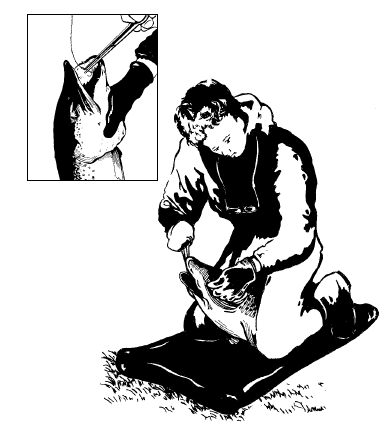 Down at Kingfisher Lakes the other day, where we filmed quite a bit of Series One, I saw some holidaymakers gathered around a very quickly dying pike. The pike had taken a spinner quite deep and the anglers, who weren’t experienced, had really struggled to remove the hooks. They were upset by this bankside tragedy and so was I. These things just have to be avoided as much as possible.
Down at Kingfisher Lakes the other day, where we filmed quite a bit of Series One, I saw some holidaymakers gathered around a very quickly dying pike. The pike had taken a spinner quite deep and the anglers, who weren’t experienced, had really struggled to remove the hooks. They were upset by this bankside tragedy and so was I. These things just have to be avoided as much as possible.
In the first instance, you must not go pike fishing on your own until you are completely confident that you can handle any pike that you hook. You’ve just got to go with experienced anglers for as many trips as it takes you to learn to unhook pike with confidence. It’s worth checking with your local branch of the Pike Anglers Club to see if they have any pike handling days. Failing that, just make sure that you get some days out with experienced pikers.
Always make sure you’ve got the tools. The guys in question didn’t have an unhooking mat and they didn’t have forceps or pliers strong enough for the job. Pike might look ferocious but they’re not. They’re just as fragile as any other fish and are terribly easily harmed.
Whenever possible, unhook the pike in the margins so you never even remove it from the water. As the pike comes towards you, see if the treble is easily visible and if it is the chances are that you can flick it out with some strong pliers.
If you have to get the pike on the bank, make sure you put it on a well-wetted unhooking mat. Put the pike on its back and straddle it so it doesn’t bounce about. Slip your left hand under the gill flaps and you will find the mouth opens easily. Providing you’ve got the right tools, you can then start unhooking it with confidence and ease.
Get the pike back as quickly as possible and make sure your weighing and photographic techniques are as swift and well-practised as you can make them.
Remember that single hooks come out far more easily than trebles. Remember, too, that barbless hooks are much easier to take out than those with barbs.
There’s all sorts to this complicated issue but these are the basics:
- Don’t go piking on your own until you are confident.
- Always make sure you’ve got the right tools and you know the right techniques.
- And always ensure that the pike’s welfare is the paramount thought in your mind. That way neither you nor the pike will go far wrong.
Image from Fishing in the Footsteps of Mr. Crabtree by John Bailey and Robert Olsen

Leave A Comment